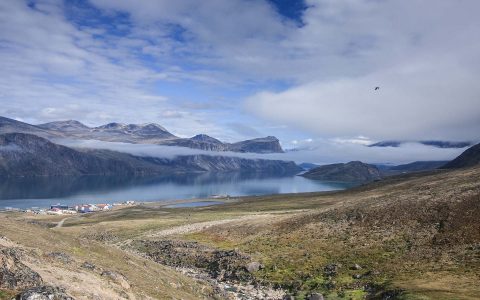Pangnirtung, located in Cumberland Sound area at 66.1466° N, 65.7012° W is home to approximately 1,500 Inuit people.
In 1838, a Scottish whaler named William Penny and his guide Eenooloapik discovered the entrance to Cumberland Sound. This led to a rush of Scottish and American bowhead whalers.
The Inuit way of life began to change at this point. By late 1850, many Inuit left their traditional camps to work at the whaling stations at Nuvuyen and Kekerten Island.
In 1921, The Hudson Bay Company built a trading post in Pangnirtung which began to attract Inuit to the area. Two years later, in 1923, the Royal Canadian Mounted Police built their first detachment. In 1929, St. Luke’s Mission Hospital was established.
The population of Pangnirtung was quite small until the early 1960’s. In 1962, many of the Inuit living on Cumberland Sound moved to Pangnirtung after a distemper epidemic killed most of their sled dogs.
In 1973, Pangnirtung became a self-governing municipal government. Today, Pangnirtung is a vibrant community known world-wide for its carvings, tapestries and prints and world class scenery as well as its access to Auyuittuq National Park.
Pangnirtung is one of only three Nunavut Communities with a fish processing plant and a robust Arctic Char and Greenlandic Turbot Fishery. As such, Pangnirtung became the first community in Nunavut to obtain funding to construct a small craft Harbour.
66.1466° N, 65.7012°
